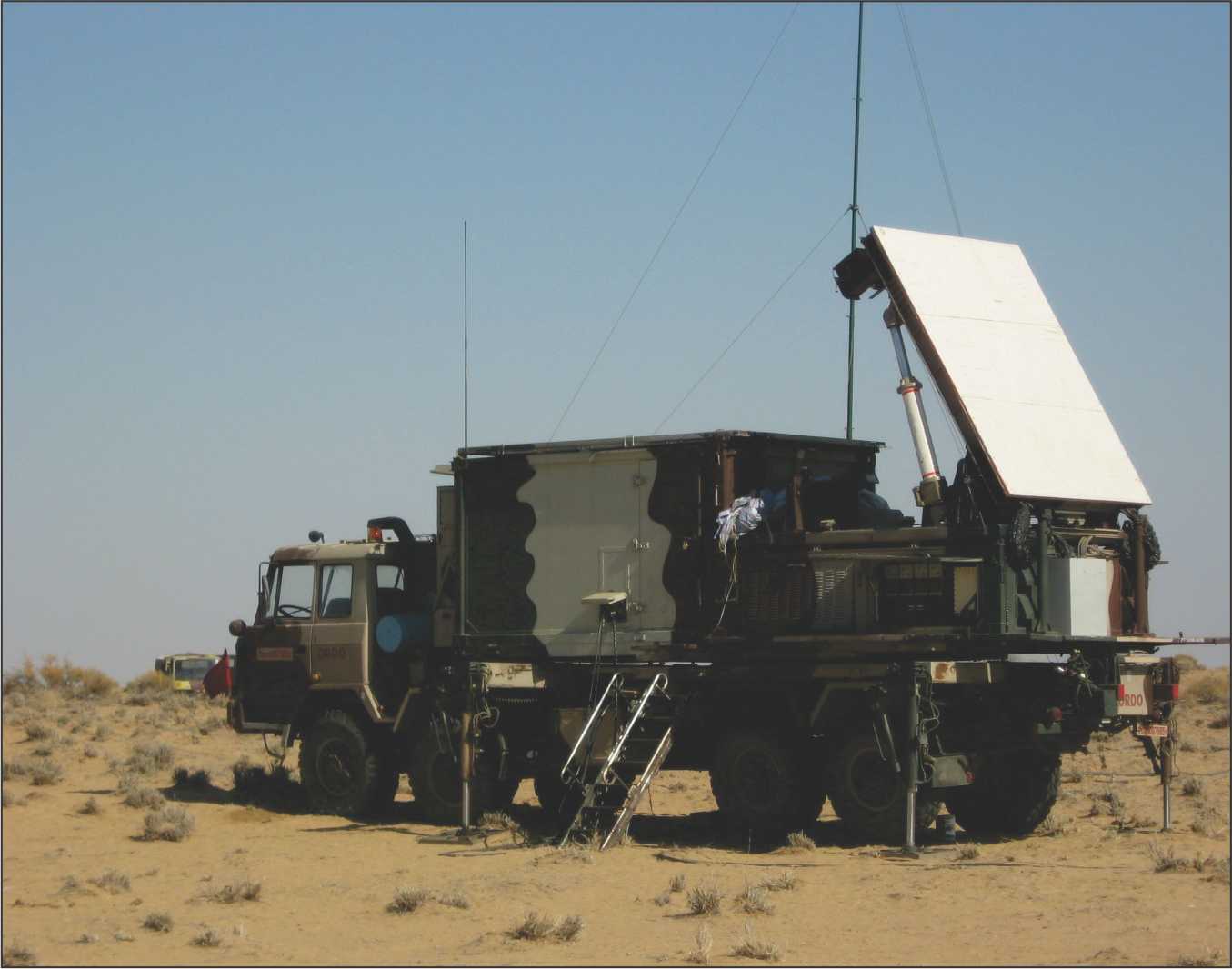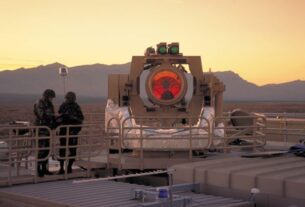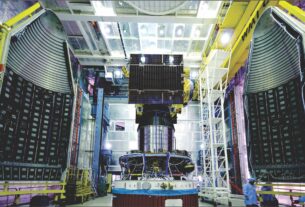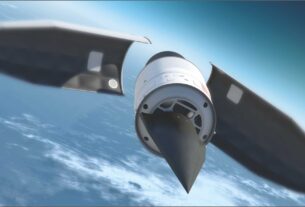The offshoots of the generic term ‘electronic warfare’ are weapon locating radars, electronic counter and counter-counter measures, observation devices and a host of military/civil tools. It is a realm of almost constant flux where methods and tricks of target acquisition meld into ways of neutralization as soon as the change is detected. If undetected disaster confronts the target nation. The initial US success in the Gulf war against Iraq was attributed to the use of electronic warfare to render Iraqi forces deaf and mute and hence vulnerable.
The products of electronics are strategic in nature and many that have dual uses in both military and civil sectors are closely guarded to ensure that they do not fall into enemy hands. Often it is also seen that nation leading in cutting edge technology do not even share it with military alliances or demand ironclad guarantees like the US insistence on the signing of three pacts intended to prevent proliferation of state-of-the-art technology even among friends. These include the Logistics Support Agreement (LSA), the Communications Interoperability and Security Memorandum of Agreement (CISMOA) and the Basic Exchange and Cooperation Agreement for Geo-Spatial Cooperation (BECA). Sometimes even after signing these the US may deliver a military platform containing leading edge components covered in sealed black boxes with self-destruct assurances.
India has long been a victim of these restrictive regimes and a frequent target of embargos as it tried to acquire military products from foreign sources. India has long felt that such regimes restrict its sovereignty of choice because many of them like the Nuclear Non-Proliferation Treaty and the Missile Technology Control Regime are discriminatory and have been used as cover to enable nations like Pakistan to acquire weaponry to be used against India.
Indigenous development
It is these restrictive regimes that have forced India to set up a large network of Defence Public Sector laboratories under the Defence Research and Development Organisation to develop indigenous technologies for the Indian armed forces. Electronics and its by-products are one such activity. As has long been the case the requirement of specific types of equipment is acutely felt only when war breaks out. One such was the weapon locating radar (WLR) which helps trace the trajectory of several different types of guns, mortars, rockets and missiles and enables a military counter-bombardment unit to retaliate against the launcher’s position almost immediately.
India felt the need for such equipment when Pakistan invaded the Kargil salient in 1999. India only had in its arsenal old British era Cymbeline radars which had only limited capability- motars and howitzers-but not against rockets.
The timelines indicate how casually and lethargically Indian defence procurement has been conducted over the decades since independence. The Indian Army made out a requisition for fire-finding radars in the late 80s. It took more than nine years before the American AN/TPQ-37 was evaluated but, as stated earlier, the US laid down unacceptable preconditions and the Army’s qualitative staff requirement for the weapon proved to be too stringent and had to be watered down and negotiations broke down. In 1998 a Request for Proposals attracted an American, a French and a Ukrainian firm but the Indian nuclear tests at Pokharan immediately attracted sanction and the deal was scrapped. Indian then decided to build an indigenous system. In the meantime the sanctions were lifted and India placed orders for 12 of the American AN/TPQ36.
Simultaneously, the Government of India sanctioned an indigenous weapons locating radar project and entrusted the work to Bharat Electronics Ltd subsidiary of the DRDO. Twenty-eight were ordered in 2004. The Indian WLR is a passive electronically scanned array (PESA) and is a derivative of the Rajendra fire control radar developed for range finding for the indigenous Akash surface-to-air missiles. Though slewable, the WLR does not rotate but the beam is steered electronically.
It is based on two vehicles, one carrying the primary sensor, processors, displays and control unit and the other carrying the power pack. It has been made keeping in mind the wide disparities in temperature and operating conditions in India from the deserts of Rajasthan to the freezing cold on the Himalayas. It can operate in temperatures ranging from -20 to +55 degrees centigrade and has inbuilt resistance to electromagnetic interference (EMI) and is electromagnetic compatibility (EMC). It is made to suit the “shoot and scoot” concept in artillery warfare and can be moved away after initiating counter-bombardment. In keeping with the requirement for use in the Himalayas as during the Kargil war a compact and robust version is on the drawing board.
Effective response
As is obvious the acronym electronic counter countermeasures (ECCM) is an extended function of electronic warfare where one set of counter measures are countered by an improved or more effective response. The whole exercise is intended to deflect by several means, including jamming, any attempt by the adversary to render one’s own equipment dysfunctional.
In Iraq the Americans did it by spraying thin strips of metal which floated down onto the Iraqi overhead electricity wires to cause a short circuit of the power supply. This in turn affected the radars and target acquisition systems. It allowed American warplanes to enter Iraqi airspace and establish complete air dominance with disastrous effects on ground forces.
The usual method of countering in electronic warfare is an increase in the power of one’s own transmitters so as to burn out the enemy transmission. This jams transmission and prevents the scanner to ascertain location and number of the invading airborne force. Sometimes this is intermixed with transmission of constantly fluctuating images of aircraft so that the radar is unable to discern the difference between the real aircraft and the deceptive image. Spoofing of images is part of this game.
The attempt to dominate the electromagnetic spectrum is a constantly changing art and there is no argument whether it is the man behind the machine or the machine itself that manages the spectrum. A electronic counter countermeasure operative is worth his weight in gold especially if he has had hands-on experience in differentiating between the profiles of enemy aircraft and the characteristics of enemy missiles and is able to discern the real from the chaff and flare. Frequency hopping and gate-ranging indicates inbuilt agility that keeps the enemy confused and makes it difficult to pinpoint the frequency of transmission and jam it.
For quite some time anti-radiation missiles are designed to home onto any radar transmissions thereby hitting the source of the emission. These were called anti-radiation missiles and the counter to this form of attack usually was to either jump frequencies which retained a large measure of operability or shut down the transmitter which only served to fulfill the enemy’s mission of rendering one’s ability to see and react infructuous. Anti-radiation missiles of the fire-and-forget kind have added to the complication by doing what is known as a ‘home on jam” on any emitting device which becomes a target of opportunity for missiles with radiation lock on systems.
More and more nations, including India, have set up static observation stations that are intended to give early warning of approaching planes and missiles. The aerostats ensure a 24X7 observation and surveillance platform. By sending aloft only passive observation equipment the system robs the intruder of any target to attack till the pilot is actually able to see the aerostat and strike.
Having acquired the initial platform from Israel the DRDO is working on an indigenous tethered balloon to increase the height of the balloon and hence the distance over which it can survey with a heavier payload. In every sense electronic warfare is a constantly changing means of making war.





